Decoding Your New Subaru's Factory Warranty: A Comprehensive Guide
What Exactly Is a Factory Warranty, Anyway?
Before diving into the specifics of Subaru’s coverage, let’s clarify what a factory warranty truly is. Simply put, it's a guarantee from the manufacturer (Subaru) that your new vehicle will be free from defects in materials or workmanship for a specified period or mileage. It comes standard with your new car purchase at no additional cost and covers repairs that are necessary due to a fault in how the car was built, not due to normal wear and tear or owner misuse. This is distinct from an extended warranty or service contract, which you might purchase separately to extend coverage beyond the factory terms.
Think of it as Subaru standing behind the quality and engineering of their vehicles. When you understand the terms, you can drive with confidence, knowing that if something unexpected arises due to a manufacturing issue, Subaru has you covered. It's an integral part of the value proposition of buying a new car and offers a substantial layer of financial protection during your initial years of ownership.
The Cornerstones of Your Subaru Protection: Key Warranties Explained
Subaru offers several layers of factory warranty coverage, each designed to protect different aspects of your vehicle for varying durations. Getting familiar with these will empower you to understand your rights and potential repair coverage.
The Bumper-to-Bumper (New Vehicle Limited) Warranty
This is often referred to as your general or 'bumper-to-bumper' coverage, though it doesn't literally cover everything from bumper to bumper. Subaru's New Vehicle Limited Warranty typically lasts for 3 years or 36,000 miles, whichever comes first. This comprehensive warranty covers most components of your new Subaru that fail due to a manufacturing defect. This includes parts and labor for things like electrical systems, air conditioning, infotainment, suspension components, and more.
It’s your primary shield against most unexpected issues during the initial phase of ownership. However, it's important to note that certain 'wear and tear' items, which we'll discuss later, are generally excluded from this coverage.
Subaru's Powertrain Limited Warranty
Moving beyond the general coverage, the Powertrain Limited Warranty is designed to protect the most vital and expensive components of your Subaru: the engine, transmission, and drivetrain. This coverage extends for 5 years or 60,000 miles, whichever comes first.
Specifically, it covers major engine components like the engine block, cylinder heads, all internal lubricated parts, oil pump, intake manifold, flywheel, and turbocharger assembly (if applicable). For the transmission, it includes the transmission case and all internal parts, torque converter, and clutch housing. Drivetrain coverage extends to drive shafts, universal joints, axle shafts, wheel bearings, and the differential assembly. Given the cost of repairing these complex systems, this longer warranty offers significant peace of mind as your Subaru accumulates more miles.
Rust Perforation Limited Warranty
Subaru also includes a Rust Perforation Limited Warranty that offers protection for 5 years with unlimited mileage. This warranty is crucial, especially for owners in regions with harsh winters or coastal environments. It specifically covers any body panel that rusts *through* due to a manufacturing defect. It's important to understand the distinction: this warranty covers actual holes caused by rust from the inside out, indicating a defect in the material or manufacturing process. It does not cover surface rust, rust caused by external factors like stone chips, scratches, or lack of proper cleaning, or rust that hasn't completely perforated a panel.
Emissions Control System Warranty
To ensure your Subaru meets stringent environmental standards, a separate Emissions Control System Warranty is provided. The duration of this warranty can vary depending on the specific component and state regulations. Many emissions-related parts are covered for the same 3 years/36,000 miles as the New Vehicle Limited Warranty. However, certain major components, such as the catalytic converter, engine control module (ECM), and other specified parts, are covered for a longer period, typically 8 years or 80,000 miles, whichever comes first, in most states. Some states with stricter emissions laws (CARB states) may offer even longer coverage for specific parts. This warranty is vital for maintaining your vehicle's compliance and performance.
Hybrid System Limited Warranty (For Applicable Models)
For owners of Subaru hybrid models, such as the Crosstrek Hybrid, there’s an additional layer of protection for the specialized hybrid components. The Hybrid System Limited Warranty typically covers key elements like the hybrid battery pack, electric motor, power control unit, and other related components. In most states, this coverage lasts for 8 years or 100,000 miles, whichever comes first. In some states that follow California emissions standards (CARB states), this warranty may extend to 10 years or 150,000 miles. This specific warranty ensures that the advanced technology powering your hybrid Subaru is protected for a significant period.
What Your Factory Warranty Doesn't Cover (And Why It Matters)
Equally important as knowing what is covered is understanding what isn't. Misconceptions here can lead to unexpected repair bills. Your factory warranty typically excludes:
- Normal Wear and Tear Items: Parts that naturally degrade with use, like tires, brake pads and rotors, wiper blades, light bulbs, filters, spark plugs, and clutch components. These are expected to be replaced as part of routine maintenance.
- Routine Maintenance: Services like oil changes, tire rotations, fluid checks, and scheduled inspections are your responsibility and not covered by the warranty.
- Damage from Accidents or Misuse: Any damage resulting from collisions, off-roading, racing, improper towing, overloading, or lack of proper care is not covered.
- Environmental Damage: Acts of nature such as floods, hail, earthquakes, or falling objects are outside the scope of the warranty.
- Unauthorized Modifications: If you install aftermarket parts or make modifications that are not approved by Subaru, and these modifications cause a component failure, your warranty claim for that failure may be denied.
- Lack of Proper Maintenance: Failing to follow the recommended maintenance schedule outlined in your owner's manual can void your warranty coverage for related components.
Understanding these exclusions helps you manage expectations and avoid surprises down the road.
Keeping Your Warranty Intact: Your Responsibilities as a Subaru Owner
Your factory warranty is a partnership between you and Subaru. To ensure your coverage remains valid, you have a few key responsibilities:
- Follow the Maintenance Schedule: This is paramount. Adhere to the recommended service intervals outlined in your owner's manual. Timely oil changes, fluid flushes, and inspections are crucial for your vehicle's health and warranty validity.
- Keep Detailed Records: Always retain receipts and service records for all maintenance performed on your Subaru. Whether done at a Subaru dealership or an independent shop, these records prove you've kept up with your vehicle's care.
- Use Genuine Parts or Equivalents: When replacing parts, especially those critical to performance or safety, ensure you use genuine Subaru parts or high-quality, equivalent aftermarket parts.
- Address Recalls Promptly: Subaru may issue recalls for safety or defect issues. It's your responsibility to address these recalls as soon as possible at an authorized dealership.
- Don't Ignore Warning Lights: If a warning light illuminates on your dashboard, address it promptly. Ignoring issues can lead to more significant damage that may not be covered if it's determined to be a result of negligence.
By upholding your end of the bargain, you ensure your Subaru continues to perform optimally and your warranty remains a reliable safety net.
Roadside Assistance & Beyond
Beyond the component warranties, new Subaru vehicles typically come with complimentary Roadside Assistance for 3 years or 36,000 miles, whichever comes first. This valuable service can assist you with flat tires, lockouts, jump starts, and emergency towing, providing an extra layer of reassurance during your initial ownership period. While not strictly part of the component warranty, it's an important benefit for new Subaru owners.
For those looking for protection beyond the factory terms, Subaru also offers Subaru Added Security® extended service agreements. While these are separate purchases and not part of the factory warranty, they can be a worthwhile consideration for owners planning to keep their vehicle for many years and miles.
Transferring Your Warranty: A Boost for Resale Value
One excellent feature of Subaru's factory warranties is that they are generally fully transferable to subsequent owners at no charge. This is a significant benefit if you decide to sell your Subaru before the factory warranty coverage expires. The remaining warranty coverage adds considerable value to your vehicle, making it more attractive to potential buyers. There are typically no special forms or fees required for the transfer; the warranty simply follows the vehicle. This makes a used Subaru, especially one still under factory warranty, a very desirable purchase.
Conclusion
Understanding your new Subaru's factory warranty is an essential part of responsible car ownership. It's your guide to what's covered, for how long, and what your responsibilities are in maintaining that coverage. By familiarizing yourself with the New Vehicle Limited, Powertrain, Rust Perforation, Emissions, and (if applicable) Hybrid warranties, and by diligently following your maintenance schedule, you can drive your Subaru with unmatched confidence and peace of mind. Always keep your owner's manual handy, and don't hesitate to ask your Subaru dealership any questions you may have about your specific coverage. Enjoy the journey, knowing your Subaru is well-protected!Where can I find my VIN?


